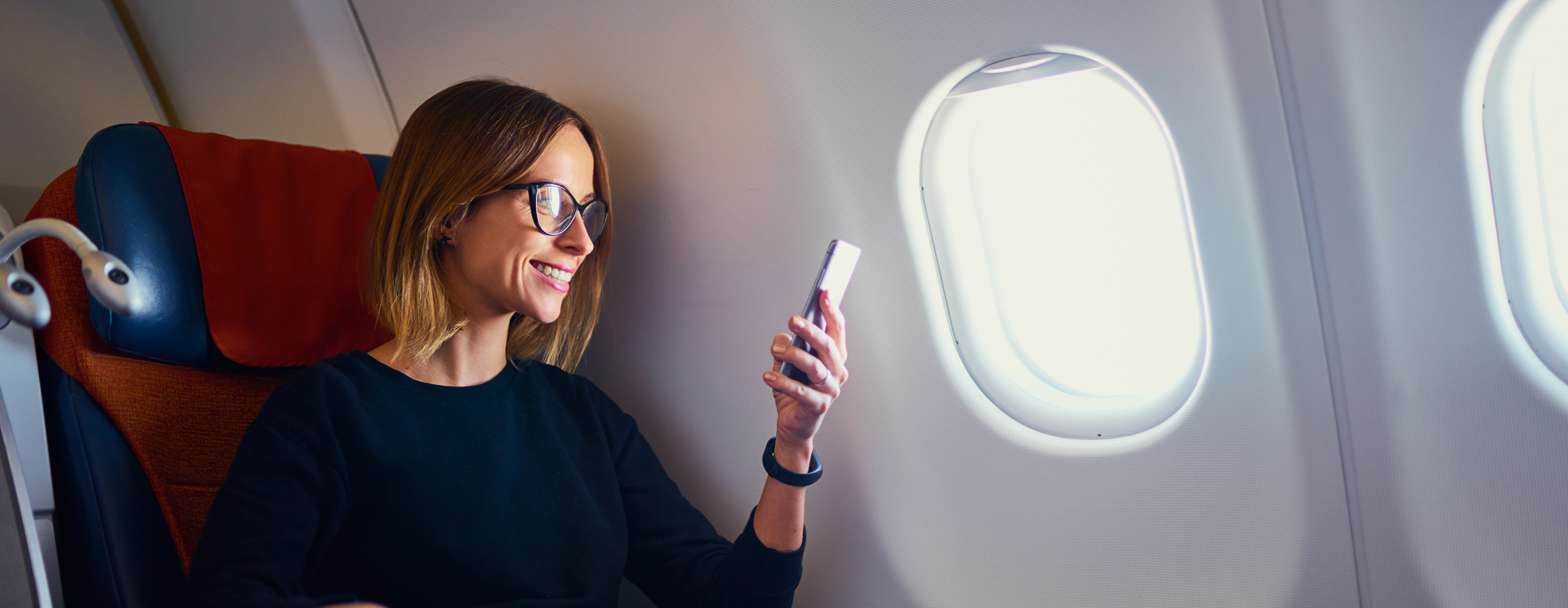Wi-Fi on Planes

Wireless internet connection has become part of our daily life and is something that we all now take for granted. We expect constant access to Wi-Fi where ever we are but until recently, air space has pretty much remained a Wi-Fi free zone!
And although inflight Wi-Fi connectivity is still a luxury, it is something passengers want more than anything when they get on the aircraft and it is becoming an expectation among travellers.
Up until recently inflight Wi-Fi connectivity has been poor but it is poised to progress across the board with new technology steadily improving reliability. Airlines are beginning to understand that staying connected is becoming more and more important to its customers who want to be able to stream their favourite programmes, tweet a photo from 35000 feet or stay in touch with the office or family and friends.
In this post I Love meet and greet takes a look at how Wi-Fi actually works high in the sky and why many airlines still to have charge for Wi-Fi.
Do all planes have Wi-Fi?
US flights tends to see WIFI readily available for both domestic and international flights and they are way ahead of the European carriers, however that is changing, and in-flight Wi-Fi is getting faster and cheaper and is being offered on more budget and flagship airlines as Europe ups their game.
If you are departing from the UK on a long-haul flight, then it is very likely that you will be given the option of inflight Wi-Fi connectivity.
How does in-flight Wi-Fi actually work?
There are two ways for an internet signal to reach your device on board an aircraft at 35,000 feet.
The first is via ground-based mobile broadband towers, which send signals up an antenna, which looks like a small fin, located underneath the aircraft.
As you travel into different sections of airspace, the plane automatically connects to signals from the nearest transmitter but if you are passing over large bodies of water or remote terrain, connectivity can be an issue.
The second method uses satellite technology. Planes connect to a network or orbiting satellites which send and receive signals to earth via receivers and transmitters. These are the same satellites that are used for tv signals, weather forecasting and covert military operations. Information is transmitted to and from your smart device via an antenna on top of the plane which connects to the nearest signal. Wi-Fi is then distributed to everyone on the plane via an on-board router.
Why is in-flight Wi-Fi expensive?
Most airlines will charge for Wi-Fi and have justifiable reasons for charging. The high cost of Wi-Fi services in the air stems from all the technology required to provide the service which doesn’t come cheap.
The antennas can burden the aircraft by increasing the drag, adding fuel costs to the airline bill, which are then usually passed on to the customer.
How much does Wi-Fi on planes cost?
As wireless internet access is becoming more available the prices airlines charge varies hugely with each airline, here are just a few examples.
British Airways now provides Wi-Fi internet connections on long-haul international flights and they expect by 2019 that 90% of their aircraft will be connected. They are hoping to be able to offer their customers the first hour free for a limited time and then after that the prices will range from £4.99 to £7.99.
Virgin Atlantic now offers wi-fi across its entire fleet costing between £2.99 and £14.99.
American airlines charge around £12.75 for Wi-Fi per flight on international routes.
Aer Lingus charges around £5.85 per hour but offers wi-fi free for business class customers.
Some airlines are offering free Wi-Fi to its passengers; Norwegian, Europe’s third largest budget carrier offer free Wi-Fi for every passenger on most of its flights within Europe as well as on flights between the US and the Caribbean.
For other airlines it is advisable to check their websites to see whether they provide wi-fi facilities on board.
Technology is developing at such a fast pace and we think it is only a matter of time until we see all airlines offering Wi-Fi connection on board.
By Sarah Anglim at 31 Oct 2018